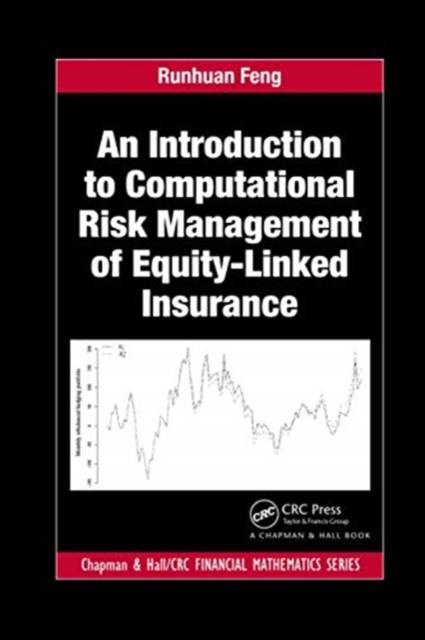
- Afhalen na 1 uur in een winkel met voorraad
- Gratis thuislevering in België vanaf € 30
- Ruim aanbod met 7 miljoen producten
- Afhalen na 1 uur in een winkel met voorraad
- Gratis thuislevering in België vanaf € 30
- Ruim aanbod met 7 miljoen producten
An Introduction to Computational Risk Management of Equity-Linked Insurance
Runhuan FengOmschrijving
The quantitative modeling of complex systems of interacting risks is a fairly recent development in the financial and insurance industries. Over the past decades, there has been tremendous innovation and development in the actuarial field. In addition to undertaking mortality and longevity risks in traditional life and annuity products, insurers face unprecedented financial risks since the introduction of equity-linking insurance in 1960s. As the industry moves into the new territory of managing many intertwined financial and insurance risks, non-traditional problems and challenges arise, presenting great opportunities for technology development.
Today's computational power and technology make it possible for the life insurance industry to develop highly sophisticated models, which were impossible just a decade ago. Nonetheless, as more industrial practices and regulations move towards dependence on stochastic models, the demand for computational power continues to grow. While the industry continues to rely heavily on hardware innovations, trying to make brute force methods faster and more palatable, we are approaching a crossroads about how to proceed. An Introduction to Computational Risk Management of Equity-Linked Insurance provides a resource for students and entry-level professionals to understand the fundamentals of industrial modeling practice, but also to give a glimpse of software methodologies for modeling and computational efficiency.
Features
- Provides a comprehensive and self-contained introduction to quantitative risk management of equity-linked insurance with exercises and programming samples
- Includes a collection of mathematical formulations of risk management problems presenting opportunities and challenges to applied mathematicians
- Summarizes state-of-arts computational techniques for risk management professionals
- Bridges the gap between the latest developments in finance and actuarial literature and the practice of risk management for investment-combined life insurance
- Gives a comprehensive review of both Monte Carlo simulation methods and non-simulation numerical methods
Runhuan Feng is an Associate Professor of Mathematics and the Director of Actuarial Science at the University of Illinois at Urbana-Champaign. He is a Fellow of the Society of Actuaries and a Chartered Enterprise Risk Analyst. He is a Helen Corley Petit Professorial Scholar and the State Farm Companies Foundation Scholar in Actuarial Science. Runhuan received a Ph.D. degree in Actuarial Science from the University of Waterloo, Canada. Prior to joining Illinois, he held a tenure-track position at the University of Wisconsin-Milwaukee, where he was named a Research Fellow.
Runhuan received numerous grants and research contracts from the Actuarial Foundation and the Society of Actuaries in the past. He has published a series of papers on top-tier actuarial and applied probability journals on stochastic analytic approaches in risk theory and quantitative risk management of equity-linked insurance. Over the recent years, he has dedicated his efforts to developing computational methods for managing market innovations in areas of investment combined insurance and retirement planning.
Specificaties
Betrokkenen
- Auteur(s):
- Uitgeverij:
Inhoud
- Aantal bladzijden:
- 382
- Taal:
- Engels
- Reeks:
Eigenschappen
- Productcode (EAN):
- 9780367734312
- Verschijningsdatum:
- 18/12/2020
- Uitvoering:
- Paperback
- Formaat:
- Trade paperback (VS)
- Afmetingen:
- 156 mm x 233 mm
- Gewicht:
- 749 g

Alleen bij Standaard Boekhandel
Beoordelingen
We publiceren alleen reviews die voldoen aan de voorwaarden voor reviews. Bekijk onze voorwaarden voor reviews.











